Pontoon Boat Covers
Heavy Duty Pontoon Boat Covers
Why quality matters when buying a pontoon boat cover
Pontoon boat covers are a practical and necessary accessory for protecting your boat from the elements when it is not in use. These covers are designed to fit snugly over the top of your pontoon boat, providing protection from the sun, rain, wind, and other weather conditions. There are many different options available when it comes to pontoon boat covers, including different materials and thicknesses. In this article, we will focus on three common materials: 150D, 300D, and 600D.
First, let's define what these materials are and how they differ. 150D, 300D, and 600D refer to the denier, or thickness, of the fabric used to make the cover. Denier is a measure of the weight and thickness of the fabric, with higher deniers indicating a thicker and more robust fabric.
Different grade pontoon boat materials
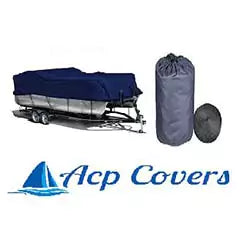
150D pontoon boat covers are made of a lightweight fabric that is suitable for basic protection against the elements. These covers are typically less expensive than thicker covers and are a good choice for those who are looking for a budget-friendly option. However, they may not provide as much protection as thicker covers and may not hold up as well in harsh weather conditions.
300D pontoon boat covers are made of a medium-weight fabric that provides a good balance between durability and cost. These covers are a popular choice for many boaters, as they offer a decent level of protection without being too heavy or expensive. 300D covers may be more resistant to tearing and wear than lighter weight covers, but they may not provide as much protection as thicker covers in extreme conditions.
600D pontoon boat covers are made of a heavy-duty fabric that is designed to withstand harsh weather conditions and heavy wear and tear. These covers are typically more expensive than lighter weight covers, but they offer the highest level of protection and durability. If you live in an area with extreme weather or plan to use your boat frequently, a 600D cover may be a good choice.
How to care for your pontoon boat cover
Now that you have a basic understanding of the different materials available for pontoon boat covers, let's talk about how to use and care for your cover.
Installing a pontoon boat cover is typically a straightforward process, but it can be made easier with the right tools and techniques. Here are a few tips to help you get your cover on and secure:-
Start by laying the cover out on the ground next to your boat. Make sure the cover is fully unrolled and all the straps and buckles are undone.
-
Place the cover over the top of your boat, making sure it is centered and aligned with the bow and stern.
-
Begin securing the cover at the bow, working your way towards the stern. Use the straps and buckles provided to snugly secure the cover to the frame of your boat. Make sure the cover is taut and there are no wrinkles or sags.
-
If your cover has a trailerable design, you will need to secure it to your trailer as well. Follow the instructions provided by the manufacturer to ensure the cover is properly secured to your trailer.
Pontoon boat cover tips
Once your cover is installed, it is important to take care of it to ensure it lasts as long as possible. Here are a few tips for caring for your pontoon boat cover:
-
Clean your cover regularly to remove dirt and debris. Use a mild soap and water solution to gently scrub the cover, taking care not to scrub too hard or use harsh chemicals.
-
Store your cover properly when it is not in use. Fold it neatly and store it in a dry, ventilated space to prevent mold and mildew growth.
-
Check your cover regularly for signs of wear and tear, such as holes
ACPCovers.com, your one-stop destination for a wide range of top-notch pontoon boat covers. Whether you're seeking pontoon boat cover support, custom designs, winter protection, or easy-to-use options, we have the perfect solution for you. Our collection boasts an extensive selection of durable, weather-resistant covers designed to safeguard your pontoon boat from the elements. With our attention to quality and functionality, you can trust us to provide the best trailering pontoon boat cover for your needs.
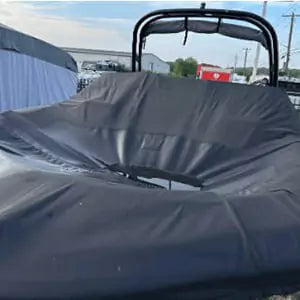
Protect Your Pontoon Boat with Reliable Covers
At ACPCovers.com, we understand the importance of preserving your pontoon boat's pristine condition. Our pontoon boat covers are meticulously crafted to shield your vessel from sun, rain, snow, and other environmental factors that can cause damage. By investing in our high-quality covers, you can extend the lifespan of your pontoon boat and enjoy worry-free storage, transportation, and mooring.

Custom Pontoon Boat Covers for a Perfect Fit
We take pride in offering custom pontoon boat covers tailored to your specific requirements. Our skilled craftsmen will ensure a precise fit for your pontoon boat, providing maximum coverage and protection. With our custom options, you can choose from a variety of colors, materials, and features, allowing you to create a cover that perfectly matches your style and needs.
Winter Covers for Year-Round Protection
When the colder months arrive, it's essential to have a pontoon boat cover that can withstand harsh winter conditions. Our pontoon boat winter cover frames are designed to support the weight of snow and ice, preventing sagging and damage to your boat. With our winter covers, you can rest assured that your pontoon boat will remain safe and secure throughout the coldest season.
Easy-to-Use Covers for Convenience
We understand that convenience matters when it comes to covering and uncovering your pontoon boat. That's why we offer covers with elastic edges, quick-release buckles, and innovative designs that make the process effortless. Our easy pontoon boat covers provide a hassle-free experience, allowing you to spend more time on the water and less time struggling with your cover.
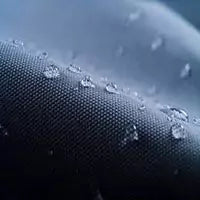
Covers for Every Pontoon Boat Size and Style
At ACPCovers.com, we understand that pontoon boats come in various sizes and styles. That's why our product collection includes covers suitable for all types of pontoon boats, from compact models to larger vessels. Whether you own a fishing pontoon boat, a luxury cruiser, or anything in between, we have the perfect cover to accommodate your specific needs.
Trailerable Pontoon Boat Covers for On-the-Road Protection
For pontoon boat owners who frequently travel, our trailerable pontoon boat covers are a must-have. These covers are specifically engineered to withstand the rigors of transportation, ensuring your boat remains safe and secure while on the road. With our trailerable covers, you can enjoy peace of mind knowing that your pontoon boat is shielded from road debris, wind, and other potential hazards.
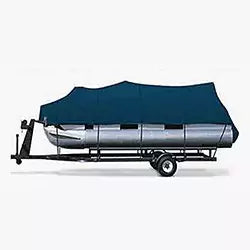
Durable Mooring Covers for Docked Protection
When your pontoon boat is moored, it's vital to have a cover that can withstand the challenges of constant exposure. Our pontoon boat mooring covers offer reliable protection against UV rays, rain, and other elements that can lead to fading, water damage, and mold growth. With our mooring covers, you can keep your boat in pristine condition and maintain its value over time.
Find Your Perfect Pontoon Boat Cover at ACPCovers.com
Whether you're searching for fisher pontoon boat covers, sun tracker pontoon boat covers, or general covers for pontoon boats, ACPCovers.com has the ideal solution for you. Our extensive collection ensures that you'll find the perfect fit, style, and level of protection for your pontoon boat. With our commitment to quality, durability, and customer satisfaction, we strive to be your go-to source for all your pontoon boat cover needs.
Premium Materials for Long-lasting Performance
We prioritize the use of premium materials in crafting our pontoon boat covers. Our covers are made from high-quality fabrics that offer exceptional durability, water resistance, and UV protection. These materials are selected to withstand the harshest outdoor conditions, ensuring that your pontoon boat remains safeguarded year after year.
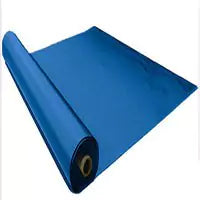
Easy Installation and Secure Fit
Installing a pontoon boat cover shouldn't be a complicated task. Our covers are designed with user-friendly features that make installation a breeze. Elastic edges, adjustable straps, and quick-release buckles ensure a snug and secure fit, keeping your cover in place even during transportation or strong winds. With our easy-to-install covers, you can spend less time fussing with the cover and more time enjoying your boat.
Versatile and Multi-Functional Designs
Our pontoon boat covers go beyond mere protection; they also offer versatility and multi-functionality. Some of our covers feature zippered access panels, allowing you to easily reach the interior of your boat without removing the entire cover. This convenient feature is perfect for quick inspections, maintenance tasks, or grabbing items from your boat without exposing it to the elements.
Personalize Your Pontoon Boat Cover
We believe that your pontoon boat cover should reflect your personal style. That's why we offer customization options to add a personal touch to your cover. Whether you want to embroider your boat's name or add a logo, our team can accommodate your customization requests. Create a unique and stylish cover that showcases your individuality and enhances the overall appearance of your pontoon boat.
Exceptional Customer Service
At ACPCovers.com, we pride ourselves on providing exceptional customer service. Our knowledgeable and friendly team is here to assist you in finding the perfect pontoon boat cover for your specific needs. We offer expert guidance, answer any questions you may have, and ensure that you're fully satisfied with your purchase. We value our customers and strive to exceed their expectations at every step of the process.
Investing in a high-quality pontoon boat cover is essential for protecting your valuable asset. ACPCovers.com offers a comprehensive selection of pontoon boat covers designed to meet the diverse needs of boat owners. From custom designs to winter covers and easy-to-use options, our collection provides superior protection, durability, and style. Browse our inventory today and find the best trailering pontoon boat cover that will keep your boat in pristine condition for years to come.

When it comes to protecting your pontoon boat, ACPCovers.com offers a diverse collection of top-quality covers that provide reliable defense against the elements. From custom-fit designs to winter covers, our products are made with premium materials, ensuring long-lasting performance and maximum protection. With easy installation, versatile features, and exceptional customer service, we are committed to being your trusted source for pontoon boat covers. Shop our collection today and give your pontoon boat the protection it deserves.






